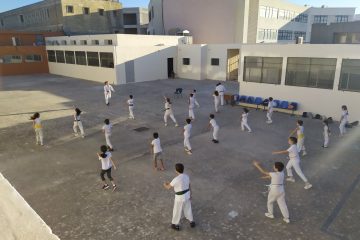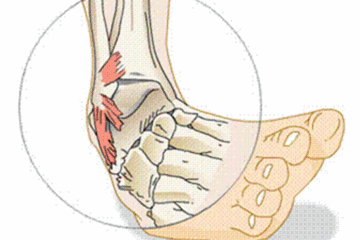I am sure that some time or another everyone has had muscle soreness especially after some intensive training session or regime.
There are basically 2 types of muscle soreness. Acute and Delayed onset muscle soreness. Acute soreness is usually felt at the time of exercise due to accumulation of chemicals in the muscle (such as lactic acid) which eases as the activity is stopped.
Delayed Onset Muscle Soreness (DOMS) emerges 24-72 hours after the actual activity.
In this write up I will be discussing DOMS.

What is muscle soreness?
Muscle soreness develops after the body goes through unaccustomed physical activity. The particular muscles that do the extra work will then go through changes during the following days and eventually adapt to that new level of physical activity. Muscle soreness can theoretically occur in all muscles of the body but it mostly happen in the large muscles, such as the back, arms, and leg muscles.
How do I know that it is not a muscle strain?
Muscle soreness usually starts the day after activity and lasts up to 3 days (24-72 hrs after activity) and is most intense 42 hours after training. A muscle strain is usually felt immediately during training but it mostly differentiates from soreness because the pain persists for more than 3 days.

What happens to a muscle in DOMS and why is it painful?
The muscle will sustain very small tears (micro trauma) which cause local inflammation. This can lead to temporary stiffness in the muscle & joints around it, temporary reduction in strength of that muscle, tenderness to touch and possibly swelling.
In studies it was found that normal strength is regained after 24 hours however inflammation takes up to 72 hours to resolve.
Can I still do intensive training sessions whilst having DOMS?
All these things mentioned above will obviously lead to pain especially on movement and it is good to listen to the body and not engage in intense physical activity until pain is completely gone as at this point in time, the muscle is in a weaker state, trying to recover. On average it needs 3 days to fully recover. However exercise could be focused on other muscle groups.
If the muscles with soreness are forced in the same way as prior to the soreness, serious damage could be done to the muscle which can lead to permanent damage such as bigger muscle tears (which will then result in loss of flexibility & elasticity in that muscle and therefore increase stiffness in the joints).

Why is the pain worse in the morning or after resting?
That is because the chemicals involved in the repair process accumulate inside the muscle during rest. Then once you get the body going and the blood circulates at a higher rate, pain will gradually ease off.
Therefore – although there is not enough evidence proving that these will increase the rate of muscle repair – it is a good idea to carry out gentle exercise (such as brisk walking or slow jog), gentle stretching and massaging since these help to alleviate the pain temporarily, allowing the body to recover naturally.

These will increase circulation in the area and therefore help flush toxins produced by the body during the process and provide the nutrients required for recovery.
Proper nutrition and keeping the body well hydrated are also important so the body has the materials it needs for recovery. Bad nutrition and dehydration can delay the process.

Note: Muscle tension is greatest when it exerts force in a stretched position (example the quadriceps muscle – thigh muscles – of the front leg during zenkutsu dachi or running downhill). Therefore a session of intensive stretching can also lead to delayed onset muscle soreness.
Can DOMS be avoided?
You do not have to feel DOMS for the muscles to become stronger and the ‘new’ activity should always be increased gradually to help prevent soreness and injuries. However, it is very difficult to avoid DOMS altogether. An important note to keep in mind is to give the body enough time to recover and heal itself if DOMS is present.
Many a time Rest is overlooked and is not given importance, but in actual fact it should be included in the weekly training program as the body needs time to recover (sometimes even if soreness is not present).

Not giving time for the body to adapt & recover can lead to immediate injuries, (such as muscle strain or tears) and long term injuries (such as inflammation of tendons). Apart from taking a longer time to heal, they could result in permanent changes in the body structures, such as thickening of tendons. The implication of this is that the body would then have to change how it functions, will become less effective & efficient in its movement and lead to repetitive injuries.
Article written by Ms Christina Desira, B.Sc (Hons) Physiotherapy, 3rd Dan Shotokan Karate – JKA, who is currently working in Primary Healthcare and deals mostly with musculoskeletal conditions
References
American College of Sports Medicine information about Delayed Onset Muscle Soreness created and updated in 2011 by William Braun, Ph.D., and Gary Sforzo, Ph.D. It is a product of ACSM’s Consumer Information Committee. Visit ACSM online at www.acsm.org.
Brad J. Schoenfeld “The Mechanisms for Muscle Hypertrophy, and Their Application to Resistance Training” Journal of Strength and Conditioning Research, vol. 24(10) (2010)
DOMS: The Good, the Bad, and What It Really Means to Your Training. Will Levy http://breakingmuscle.com/strength-conditioning/doms-the-good-the-bad-and-what-it-really-means-to-your-training
Artur Bessa, et. al., “Exercise intensity and recovery: Biomarkers of injury, inflammation and oxidative stress,” Journal of Strength and Conditioning Research, DOI: 10.1519/JSC.0b013e31828f1ee9 http://breakingmuscle.com/health-medicine/whats-happening-in-your-blood-after-a-workout
Sore Muscles? Don’t Stop Exercising. Source WebMD 2003. Rick Sharp, professor of exercise physiology, Iowa State University, Ames. David O. Draper, professor and director of the graduate program in sports medicine/athletic training, Brigham Young University, Provo, Utah. Carol Torgan, exercise physiologist; fellow of the American College of Sports Medicine.


